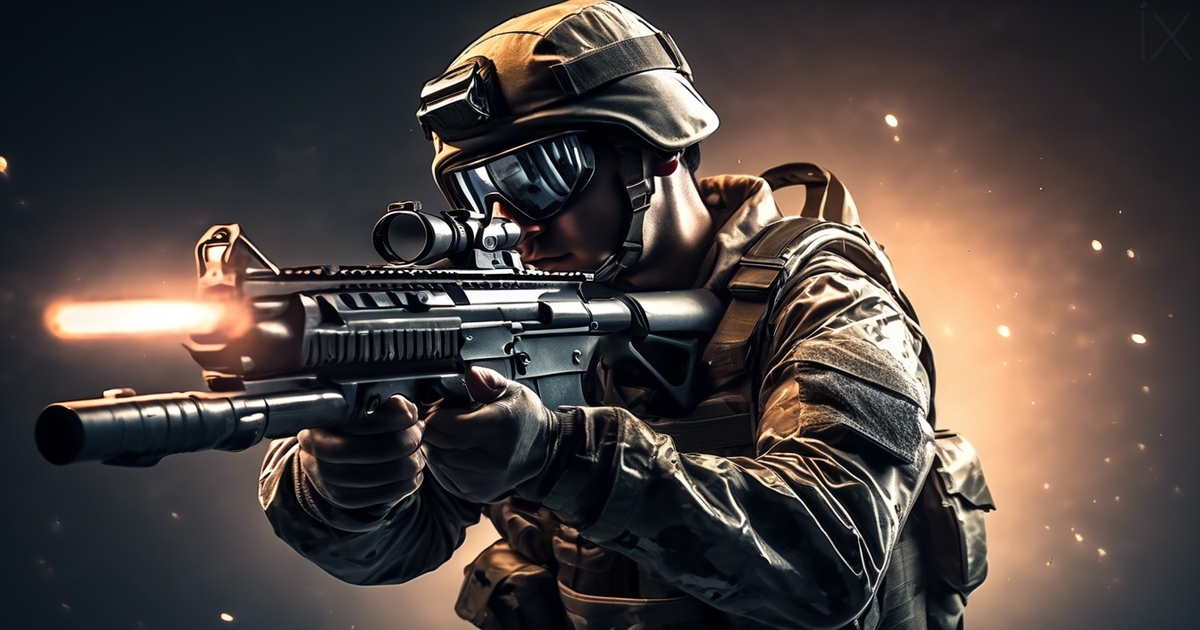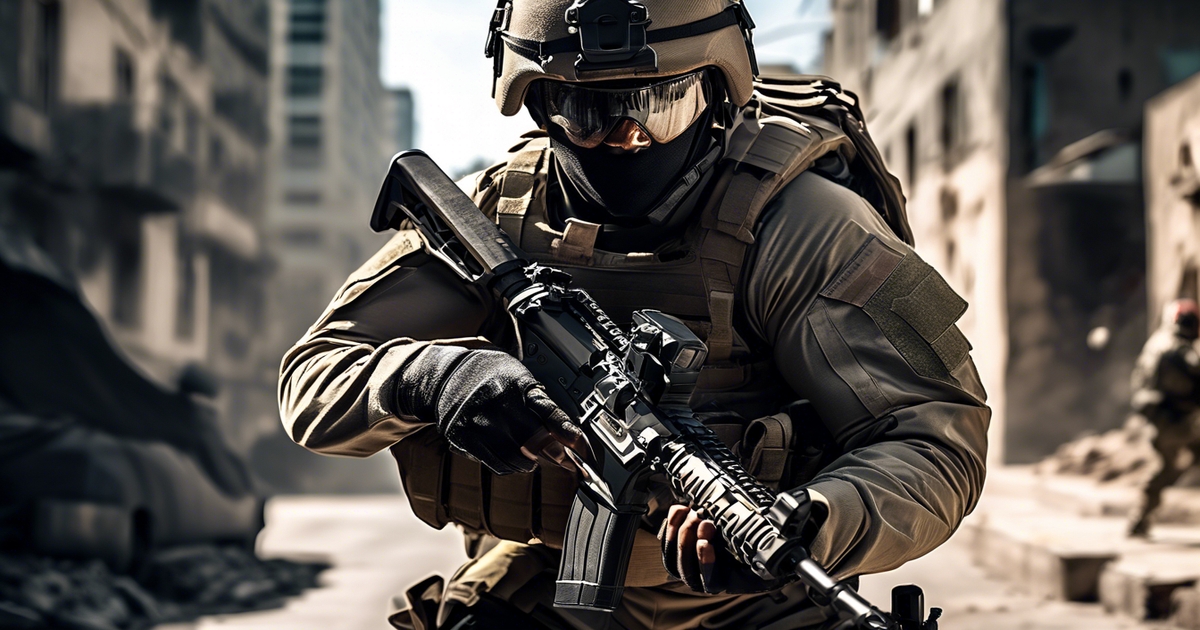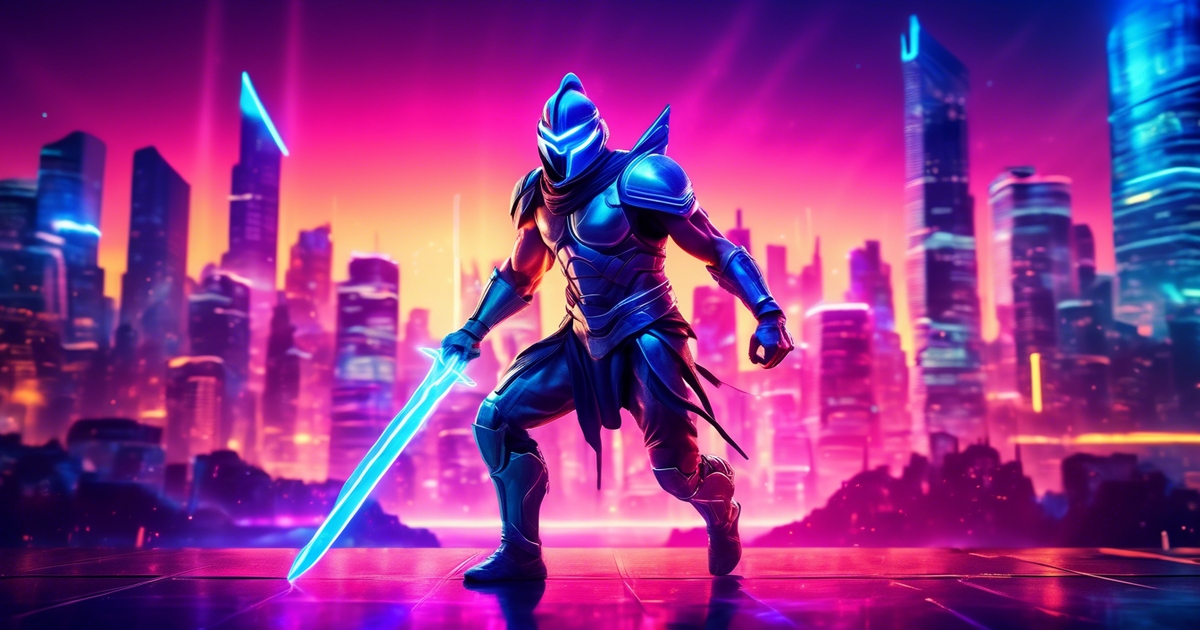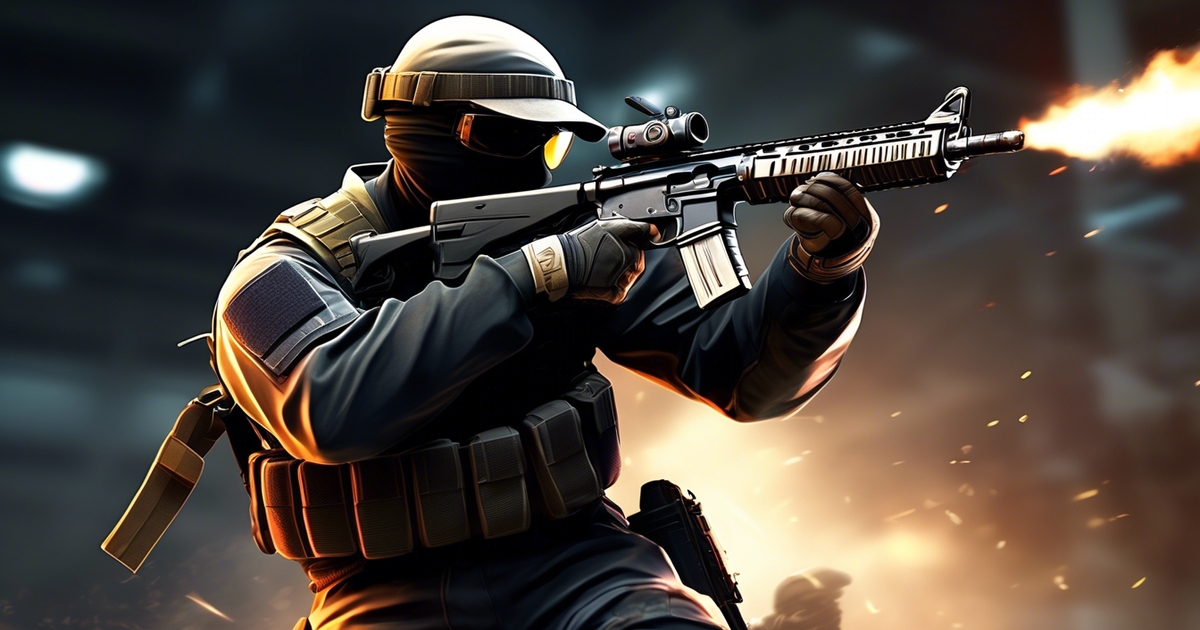What Are Shooting Games: A Comprehensive Guide

- What Are Shooting Games
- History and Evolution of Shooting Games
- Most Popular Shooter Games
- Different Types of Shooting Games
- First-Person vs Third-Person Shooters
- Tactical and Looter Shooter Games
- Rise of Battle Royale in the Shooting Genre
- Controversies and Cognitive Effects of Shooting Games
- Conclusion
- Frequently Asked Questions
Shooting games are all about using weapons to take down enemies. They demand lightning-fast reflexes and cunning strategy. These adrenaline-pumping games have captured the hearts of gamers worldwide. Whether it’s wielding light guns, engaging in gunfights, or exploring a range of powerful firearms, shooter games offer an immersive experience. From classic titles like “GoldenEye 007” to modern sandbox shooters, these games continue to evolve with new features and cutting-edge gameplay. With their emphasis on quick thinking and precision, shooter video games provide a thrilling challenge for players seeking action-packed entertainment.
In this article, we’ll go over everything about shooting games and why it’s such a popular video game genre.
What Are Shooting Games
Shooting games, also known as shooter games, involve players using firearms or other weapons to shoot enemies or targets. These games often require precision and quick reflexes as players navigate through various challenges and obstacles while engaging in combat.
The shooter genre encompasses a wide range of gameplay styles, including first-person shooters (FPS), third-person shooters, rail shooters, and space shooters. Each subgenre offers a unique perspective and mechanics for players to explore. For instance, first-person shooters immerse players in the game world from the protagonist’s viewpoint, providing an intense and immersive experience where they can see their character’s hands and weapon as they navigate the environment.
Moreover, shooter games present diverse settings that cater to different preferences. Players can experience shooter gameplay in various scenarios, ranging from realistic military settings to futuristic science fiction worlds. This diversity allows individuals to engage with themes that resonate with their interests while enjoying the thrill of combat and strategy.
Some shooter games utilize light guns for a more interactive video game playing experience. Light guns are peripheral devices designed to resemble real firearms and enhance the player’s immersion by allowing them to aim and shoot directly at the screen. These accessories add an extra layer of realism and excitement to shooting games, making the gameplay more engaging for enthusiasts.
In essence, shooting games offer an adrenaline-pumping experience that combines action-packed gameplay with strategic thinking. Whether it’s navigating through intense firefights in a war-torn city or battling alien invaders in outer space, shooter games provide an avenue for players to test their skills and reflexes while immersing themselves in captivating virtual worlds.
History and Evolution of Shooting Games
Shooting Games Evolution
Shooting games have come a long way from their humble beginnings as simple 2D shooters. In the early days, these games were characterized by basic graphics and straightforward gameplay. However, with advancements in technology, shooting games have transformed into complex and immersive experiences that captivate players with stunning visuals and intricate storylines.
Roots in Arcade Classics
The roots of shooting games can be traced back to iconic arcade classics such as “Space Invaders” and “Doom.” These pioneering titles laid the foundation for the genre, introducing players to the thrill of battling hordes of enemies in a virtual environment. “Space Invaders,” released in 1978, is credited with popularizing the concept of shooting at waves of descending alien spacecraft. On the other hand, “Doom,” which debuted in 1993, revolutionized first-person shooter (FPS) games with its innovative 3D graphics and multiplayer capabilities.
Influence of Technological Advancements
Advancements in technology have played a pivotal role in shaping the evolution of shooting games. The transition from pixelated 2D graphics to high-definition 3D visuals has significantly enhanced the overall gaming experience. Improvements in processing power have enabled developers to create expansive open-world environments and intricate character designs, elevating shooting games to new heights of realism and immersion.
The advent of virtual reality (VR) technology has also contributed to the evolution of shooting games by offering players an unprecedented level of engagement. VR-enabled shooting games allow players to step into fully realized digital worlds, where they can physically interact with their surroundings and experience adrenaline-pumping action like never before.
Most Popular Shooter Games
Here are some popular shooter games.
1. Call of Duty
Call of Duty, a renowned first-person shooter video game, has garnered immense popularity for its intense gameplay and realistic graphics. The game offers various multiplayer modes, fostering competitive gaming experiences. Its iconic status in the video game industry solidifies its influence on the shooter genre.

2. Halo
Halo stands out as a popular video game celebrated for its immersive 3D gameplay and futuristic setting. With both single-player and multiplayer modes, players engage in intense battles with friends or online opponents. The rich storyline and advanced graphics have positioned Halo as a benchmark for modern shooting games, leading to the development of several sequels and spin-offs.

3. Counter Strike
Counter Strike has carved its place as a beloved multiplayer shooter game within the FPS category, emphasizing strategy and teamwork. Its dedicated fan base is drawn to the intense and competitive gameplay it offers. Notably, Counter Strike has played a pivotal role in shaping the contemporary shooter video game landscape.

Different Types of Shooting Games
Shooting games come in various forms, offering diverse experiences for players. They encompass a wide range, including first-person, third-person, and top-down shooters. First-person shooters (FPS) immerse players in the game’s world through the eyes of the character they control. This perspective allows for intense and realistic gameplay, as seen in popular titles like “Call of Duty” and “Halo.”
On the other hand, third-person shooters (TPS) provide a different viewpoint by placing the camera behind the character. This perspective allows for better spatial awareness and strategic gameplay. Games like “Gears of War” and “Uncharted” belong to this category, offering engaging narratives along with action-packed gameplay.
Top-down shooters offer a bird’s-eye view of the game environment. Players have a comprehensive view of their surroundings, enabling them to plan tactics and respond to threats effectively. Titles like “Hotline Miami” and “Enter the Gungeon” fall into this category.
Moreover, shooting games feature subgenres that cater to specific playstyles and preferences. Tactical shooters emphasize realistic combat situations where strategy and precision are crucial for success. Games such as “Rainbow Six Siege” and “Ghost Recon” exemplify this subgenre by focusing on teamwork and careful planning.
Looter shooters combine shooting mechanics with elements of looting and character progression. Players engage in combat while collecting valuable loot to enhance their characters’ abilities or gear. Titles like “Destiny 2” and “Borderlands” are prime examples of looter shooter games that offer extensive customization options.
Furthermore, battle royale games have gained immense popularity in recent years due to their intense multiplayer competition. In these games, numerous players compete until only one remains standing, creating an adrenaline-fueled experience. Titles such as “Fortnite,” “PUBG,” and “Apex Legends” have captivated millions of players worldwide with their fast-paced action and ever-shrinking battlegrounds.
Each type of shooting game presents unique challenges and perspectives for players. Whether it’s navigating through intense firefights in first-person shooters or strategizing from a top-down viewpoint, shooting games offer an array of experiences catering to different playstyles.
| Game Type | Description | Example Games |
|---|---|---|
| First-Person Shooter (FPS) | Players experience the game through the eyes of the protagonist, typically with a heavy emphasis on gunplay and combat. | Call of Duty, Halo, Battlefield |
| Third-Person Shooter | Players view the game from a perspective behind the character, often featuring cover-based mechanics and strategic shooting. | Gears of War, The Division, Max Payne |
| Tactical Shooter | Emphasizes realistic and strategic gameplay, requiring careful planning and teamwork. | Rainbow Six Siege, Ghost Recon |
| Battle Royale | Players compete to be the last one standing in a shrinking play area, often with a focus on scavenging for weapons and gear. | Fortnite, PUBG, Apex Legends |
| Shoot ’em up | Fast-paced games where players control a vehicle or character and navigate through waves of enemies while shooting. | Galaga, R-Type, Geometry Wars |
| Sniper | Focuses on precision shooting and stealth, often requiring players to eliminate targets from a distance. | Sniper Elite, Hitman Sniper, Sniper: Ghost Warrior |
First-Person vs Third-Person Shooters
First-Person Shooters
First-person shooters, commonly known as FPS games, immerse players by placing them directly in the character’s viewpoint. In these games, you see the game world through the eyes of your character, providing a sense of immediacy and intensity. This perspective allows for an intense focus on aiming and shooting, creating a heightened sense of realism and immersion.
Third-Person Shooters
On the other hand, third-person shooters offer a broader field of view by situating the camera behind and slightly above the character. This vantage point provides better situational awareness as players can see their character and their surroundings simultaneously. It allows for strategic positioning, peeking around corners, and taking cover effectively.
Both Perspectives’ Advantages Each perspective has its unique advantages that cater to different player preferences. First-person shooters excel at drawing players into the action, making them feel like they are truly part of the game’s world. In contrast, third-person shooters provide a more tactical advantage by offering a wider view of the battlefield.
Player Preferences For those who enjoy feeling fully immersed in the game’s environment and experiencing intense combat from a personal perspective, first-person shooters are often preferred. Conversely, players who prioritize strategic positioning, environmental awareness, and precise maneuvering may lean towards third-person shooters.
Tactical and Looter Shooter Games
Tactical shooters are a subgenre of shooting games that prioritize realistic combat scenarios and strategic decision-making. In these games, players often find themselves immersed in intense, lifelike battlefields where every move and choice can significantly impact the outcome. Titles like “Rainbow Six” and “Ghost Recon” are prime examples of tactical shooters, offering players the opportunity to engage in carefully planned operations, coordinating with teammates, and employing authentic military tactics.
Looter shooters represent another captivating subgenre that seamlessly blends shooting gameplay with elements of looting and character progression. These games often feature expansive worlds or levels filled with various weapons, gear, and resources for players to scavenge. As players progress through the game, they acquire better equipment and abilities, enhancing their effectiveness in combat. Notable titles such as “Destiny” and “Borderlands” exemplify this genre by incorporating a compelling loot system into their gameplay mechanics, providing an addictive cycle of acquiring powerful loot while engaging in exhilarating gunplay.
Both tactical shooters and looter shooters add depth and complexity to traditional shooting game mechanics by introducing strategic elements or rewarding players with valuable loot. This infusion of new dynamics elevates the overall gaming experience, appealing to a wider audience beyond just shooting enthusiasts. The blend of strategy in tactical shooters challenges players to think critically about their approach to each encounter, fostering a more immersive and intellectually stimulating gameplay experience.
Similarly, looter shooters introduce an additional layer of excitement by integrating the thrill of discovering rare items within the core shooting gameplay. This amalgamation keeps players engaged as they strive to improve their characters’ capabilities through the acquisition of increasingly potent weaponry and equipment.
In essence, these subgenres cater to gamers seeking more than just straightforward shooting mechanics. They offer an enriched experience that demands both skillful execution on the battlefield as well as thoughtful decision-making outside of combat situations. By providing diverse challenges beyond mere marksmanship skills or reflexes, tactical shooters and looter shooters ensure that video game enthusiasts have access to multifaceted experiences that go beyond conventional shooting games.
Rise of Battle Royale in the Shooting Genre
Battle royale games have taken the gaming world by storm, captivating players with their adrenaline-pumping, last-player-standing gameplay. Titles like “Fortnite” and “PlayerUnknown’s Battlegrounds” have spearheaded a revolution in the multiplayer shooting experience, drawing millions of players into their virtual battlegrounds. This surge in popularity has not only transformed the gaming landscape but has also significantly influenced the direction of shooting games as a whole.
The immense success of battle royale games can be attributed to their unique blend of intense combat, strategic decision-making, and unpredictable outcomes. Players are thrust into sprawling maps where they scavenge for weapons and resources while constantly maneuvering to outlast opponents. This dynamic and high-stakes gameplay has resonated with a vast audience, leading to an unprecedented surge in the genre’s popularity.
The influence of battle royale extends beyond individual game titles; it has fundamentally shaped the evolution of shooting games across various platforms. Developers are increasingly integrating battle royale elements into existing franchises or creating standalone titles within this genre. For example, renowned series like “Call of Duty” have incorporated battle royale modes to cater to the growing demand for this style of gameplay.
Moreover, the rise of battle royale has prompted developers to explore innovative approaches to multiplayer engagements within shooting games. The emphasis on survival and resource management introduced by these games has sparked a wave of creativity across different genres. Elements such as scavenging for gear and adapting to shrinking play areas have transcended traditional boundaries, influencing diverse gaming experiences beyond just shooting games.
In essence, the impact of battle royale extends far beyond its immediate genre; it has redefined player expectations for interactive experiences in general. As a result, game developers are continually striving to infuse elements that capture the essence of intense competition and unpredictability that define successful battle royale titles.
As we witness this paradigm shift in gaming preferences, it becomes evident that the influence of battle royale is not merely confined to a passing trend but rather represents a fundamental transformation in how gamers engage with virtual environments. The legacy left by titles like “Fortnite” and “PlayerUnknown’s Battlegrounds” will continue to reverberate throughout not only shooting games but also other genres seeking to emulate their meteoric rise.
Controversies and Cognitive Effects of Shooting Games
Shooting games have sparked debates regarding their potential impact on aggression and desensitization to violence. Research studies continue to explore the cognitive effects of prolonged exposure to shooting game content. The controversies surrounding shooting games raise important discussions about media influence on behavior.
Impact on Aggression
The debate over whether shooting games contribute to real-life aggression has been ongoing. Some argue that playing these games may desensitize individuals to violence, making them more prone to aggressive behavior. However, it’s essential to note that numerous factors contribute to aggression, including family environment, social interactions, and individual predispositions.
Cognitive Effects
Research into the cognitive effects of shooting games has revealed mixed findings. While some studies suggest a potential link between playing violent video games and decreased empathy or desensitization to real-world violence, others indicate that such games could enhance certain cognitive skills. For instance, action-packed shooting games may improve visual attention, spatial cognition, and decision-making abilities in players.
Media Influence on Behavior
The controversies surrounding shooting games bring attention to the broader issue of media influence on behavior. It prompts discussions about how exposure to certain types of media content can shape attitudes, beliefs, and behaviors. While it is crucial to acknowledge the potential impact of media consumption on individuals’ perceptions and actions, it’s equally important not to oversimplify complex societal issues by attributing them solely to video game exposure.
Conclusion
So, there you have it – shooting games have come a long way from their humble beginnings to becoming a dominant force in the gaming industry. From classic first-person shooters to the rise of battle royale games, the genre continues to evolve and captivate players worldwide. Whether you’re a fan of intense, fast-paced action or prefer strategic gameplay, there’s a shooting game out there for everyone. As technology advances, we can only imagine what the future holds for this exhilarating genre. So grab your controller, lock and load, and immerse yourself in the adrenaline-pumping world of shooting games!
Ready to dive into the world of shooting games? Whether you’re a seasoned gamer or just starting, exploring the diverse range of shooting games can be an exciting adventure. So, why not pick up a new title and experience the thrill for yourself? The virtual battleground awaits!
Frequently Asked Questions
What are shooting games?
Shooting games are video games that involve using weapons to defeat opponents or targets. Players typically view the action from a first-person or third-person perspective and engage in combat scenarios.
What are the different types of shooting games?
There are various types of shooting games, including first-person shooters (FPS), third-person shooters (TPS), tactical shooters, looter shooters, and battle royale games. Each type offers unique gameplay mechanics and experiences for players.
What is the difference between first-person and third-person shooters?
In a first-person shooter (FPS), players experience the game world through the eyes of their character, while in a third-person shooter (TPS), they view their character from behind. This distinction affects gameplay dynamics and player immersion.
Are there any controversies surrounding shooting games?
Yes, shooting games have been a subject of controversy due to concerns about their potential cognitive effects on players, particularly regarding aggression and desensitization to violence. However, research findings on this topic remain debated and inconclusive.
What are some popular shooter games?
Popular shooter games include titles like Call of Duty, Halo, Fortnite, Overwatch, Counter-Strike: Global Offensive, and PUBG. These games have gained widespread acclaim for their engaging gameplay and competitive multiplayer features.
